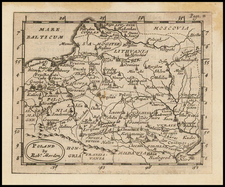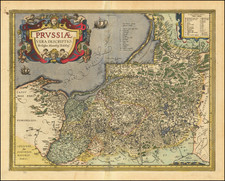Feudal Era Map of Western Poland
Interesting hand drawn map, likely done in the late 18th or early 19th Century, depicting the region using Feudal era regions.
This map offers a detailed depiction of a historically contested borderland, encompassing an area of western Poland and neighboring parts of northeastern Germany. Centered on Lubsko (Sommerfeld), the territories illustrated include key locales such as Sagan, Triebel, Sorau (Żary), Muscka, Forst, Pforten (Brama), Gubin, Bobersberg, and Krzystkowice, articulating the complex mosaic of governance and influence that characterized this region.
The map identifies a number of The Herrschafts (lordships), including Amptitz, Pforten, Forst, Triebel, and Sorau, regions were under the feudal system, typical of Central European governance from the Middle Ages through the early modern period. This era, roughly from the 14th to the 17th centuries, saw the prevalence of the feudal system in Central Europe. During this period, local lords controlled various small territories or estates, such as Amptitz, Pforten, Forst, Triebel, and Sorau.
The map is concentrated on the region between the Bobr River and the Neisse River. At the far east is Christianstad (Krzystkowice), the western district of the city of Nowogród Bobrzańsk, on the left bank of the Bóbr River.
At the center of the map is Sommerfeld (Lubsko), which is showed as controlled by Brandenburg. The Wettin margraves sold Sommerfeld to Brandenburg in 1304. Emperor Charles IV of Luxembourg later granted it, along with Lower Lusatia, to Silesian Piast duke Bolko II the Small in 1364. After Bolko's death in 1368, it reverted to the Bohemian (Czech) Crown. The town was invaded by the Hussites in 1429 and returned under Polish rule during the succession war of the Duchy of Głogów, paying homage to Piast Duke John II the Mad in 1464.
Acquired by Brandenburg Elector Albert III Achilles of Hohenzollern in 1482, Sommerfeld was incorporated into the Neumark district. During the Napoleonic Wars and Polish national liberation fights in 1813, Polish uhlans were quartered there. From 1816, Sommerfeld belonged to the Prussian Province of Brandenburg and was connected by rail to Berlin and Breslau (Wrocław) in 1846. It was part of Germany from 1871 to 1945.









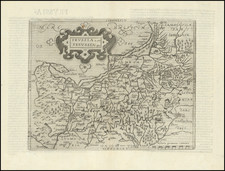
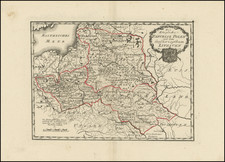
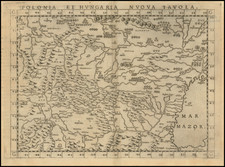
![(Second World War - Eastern Front) [The Soviet Encirclement of Konigsberg]](https://storage.googleapis.com/raremaps/img/small/65659.jpg)
